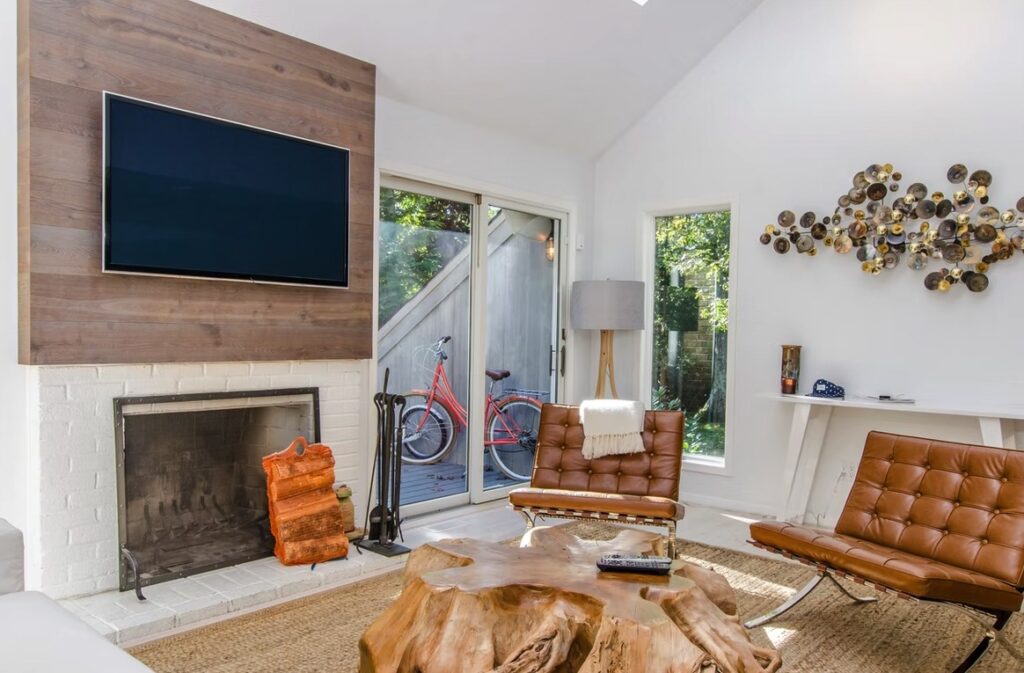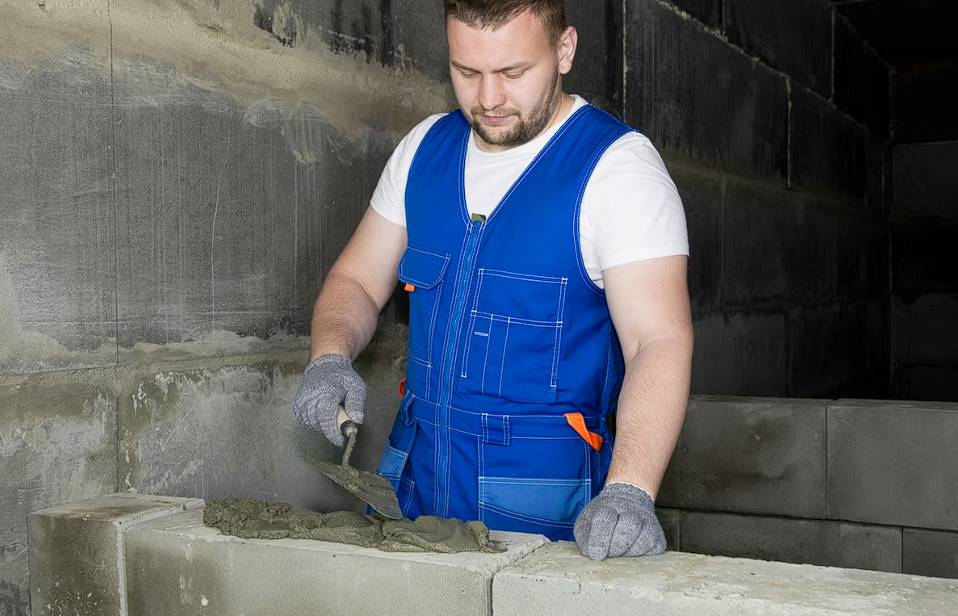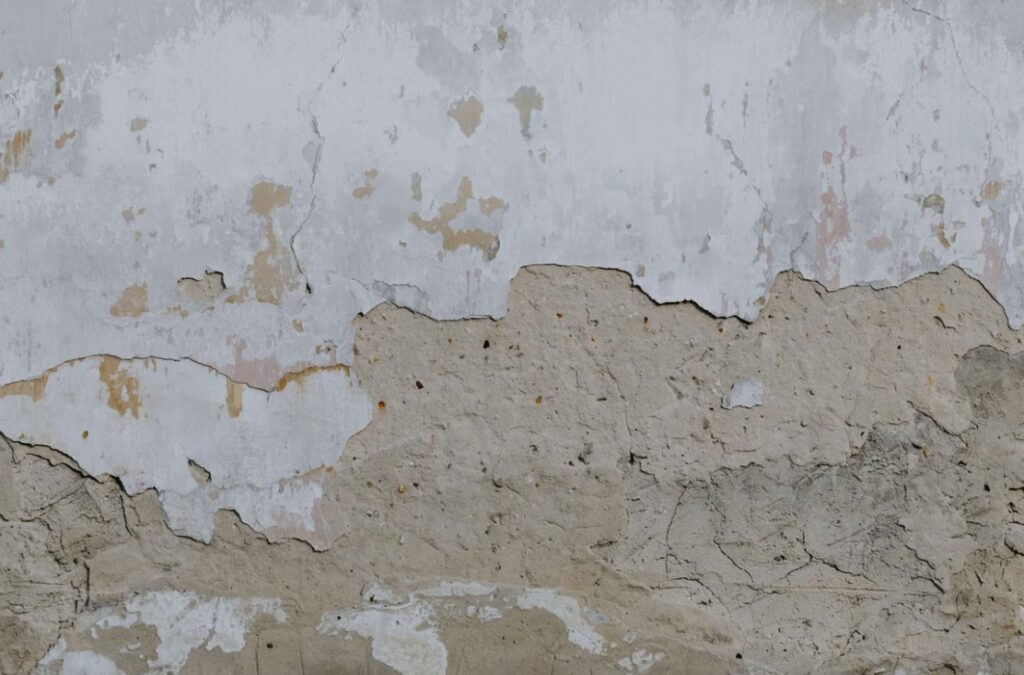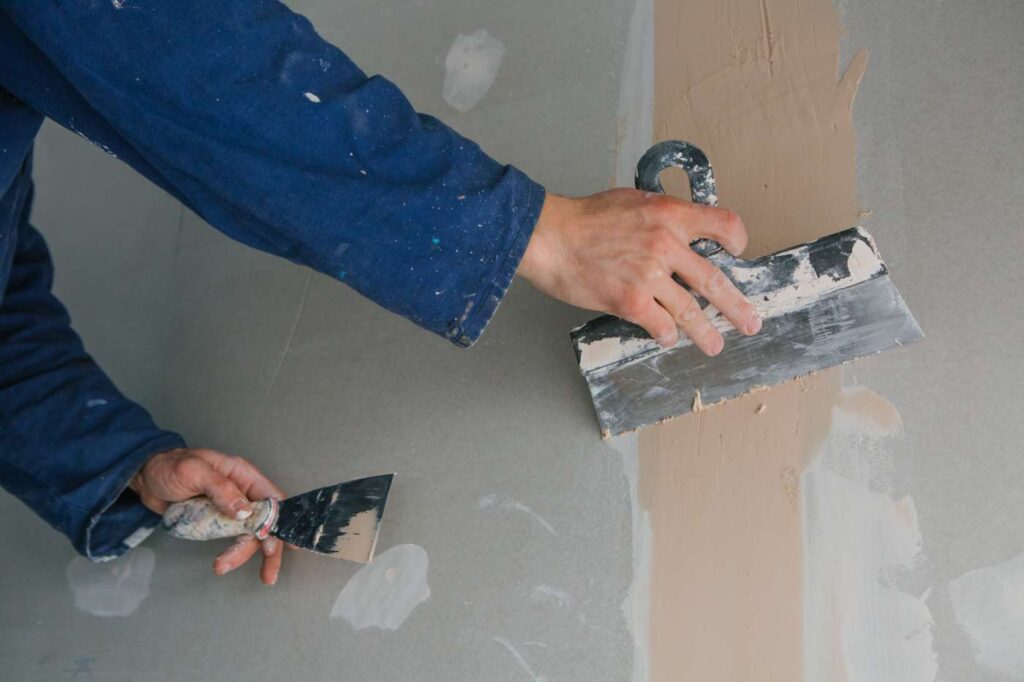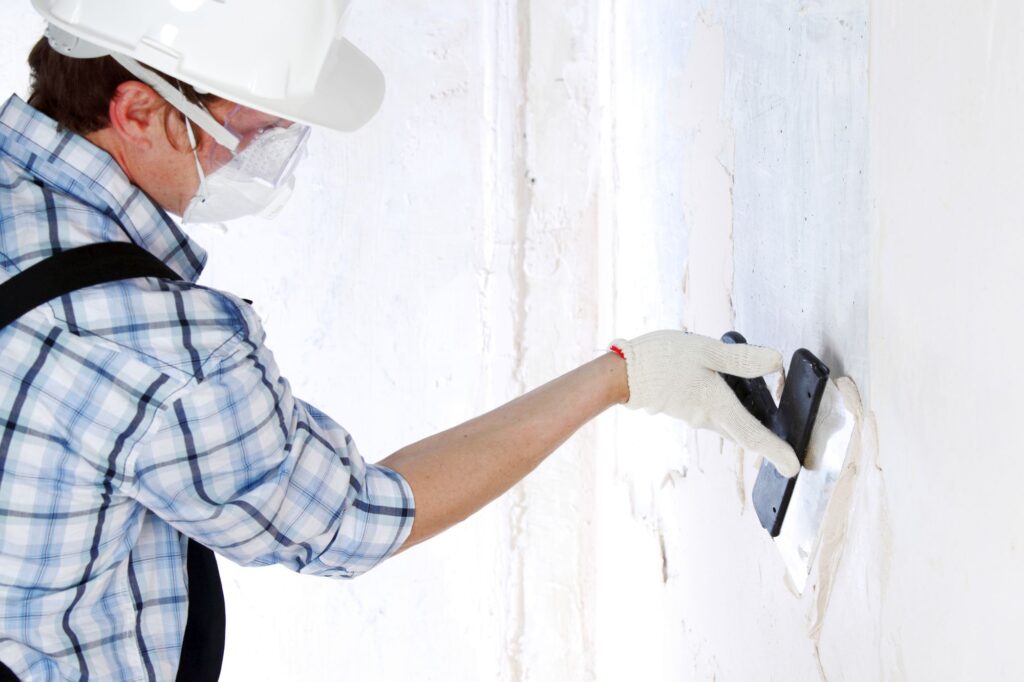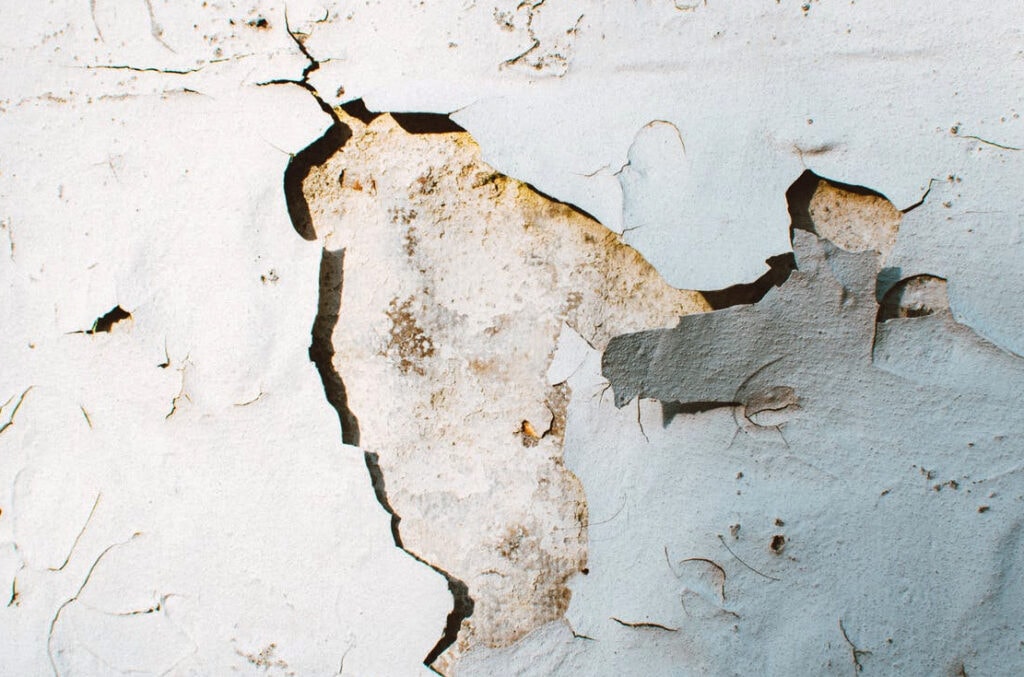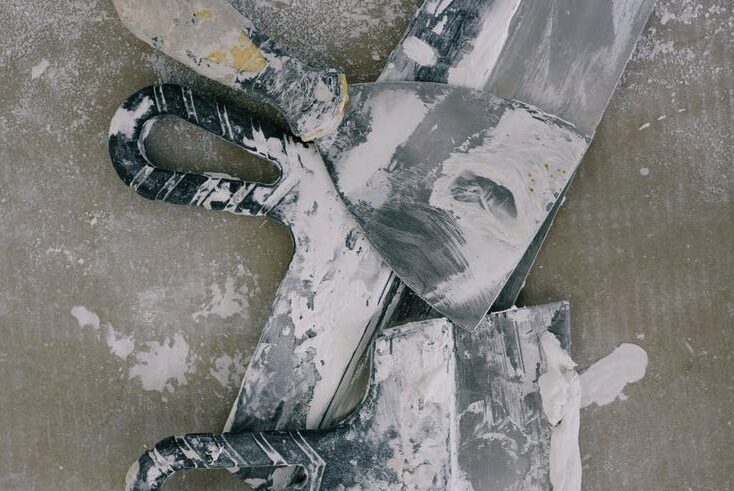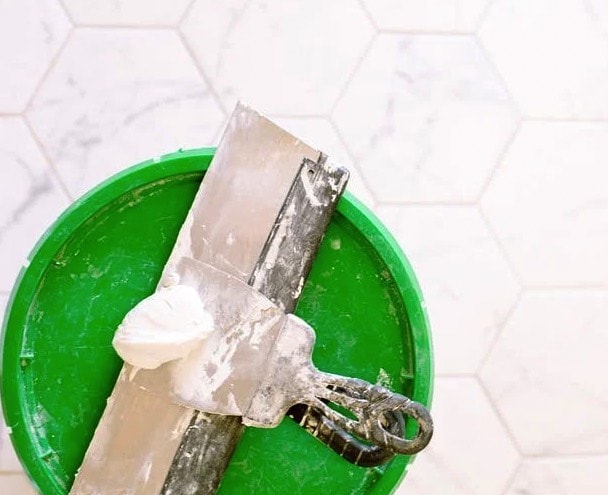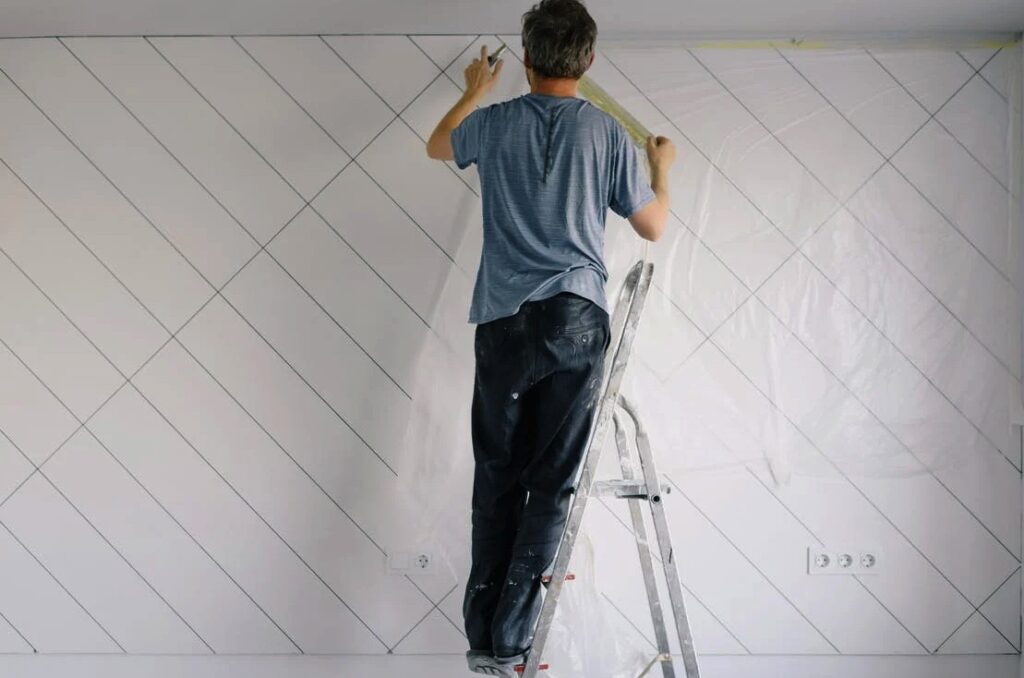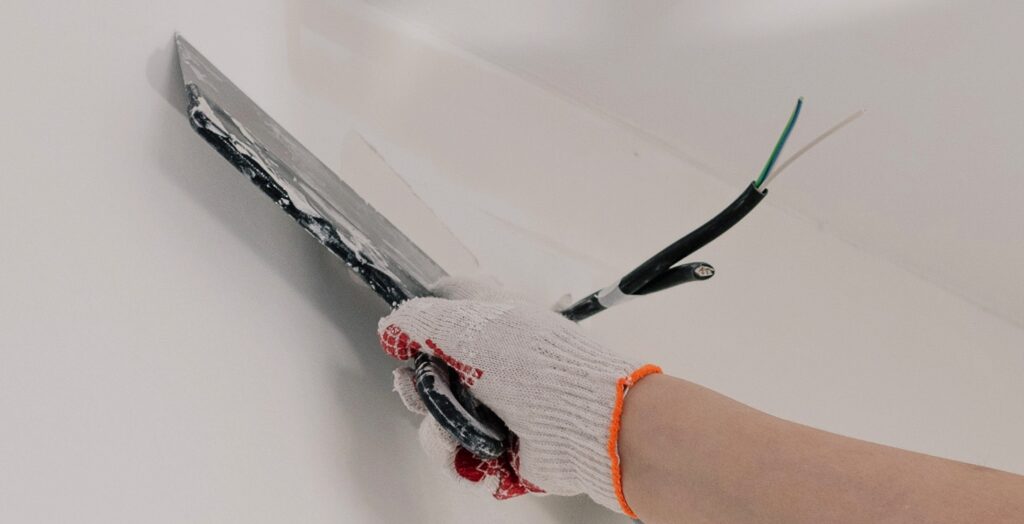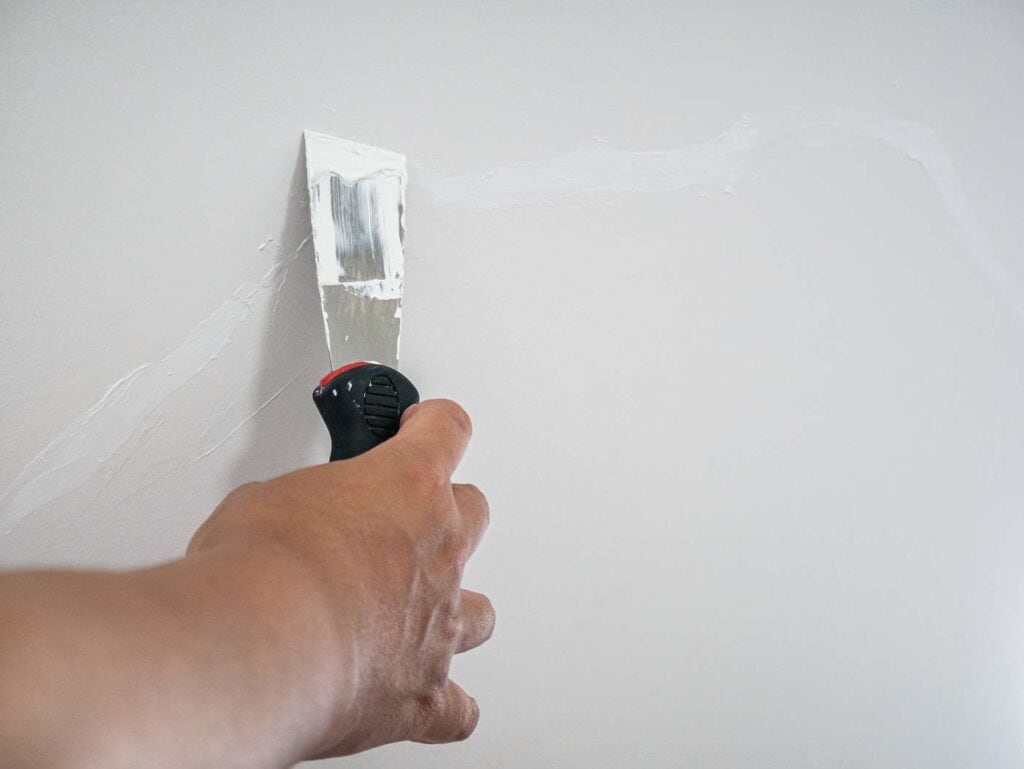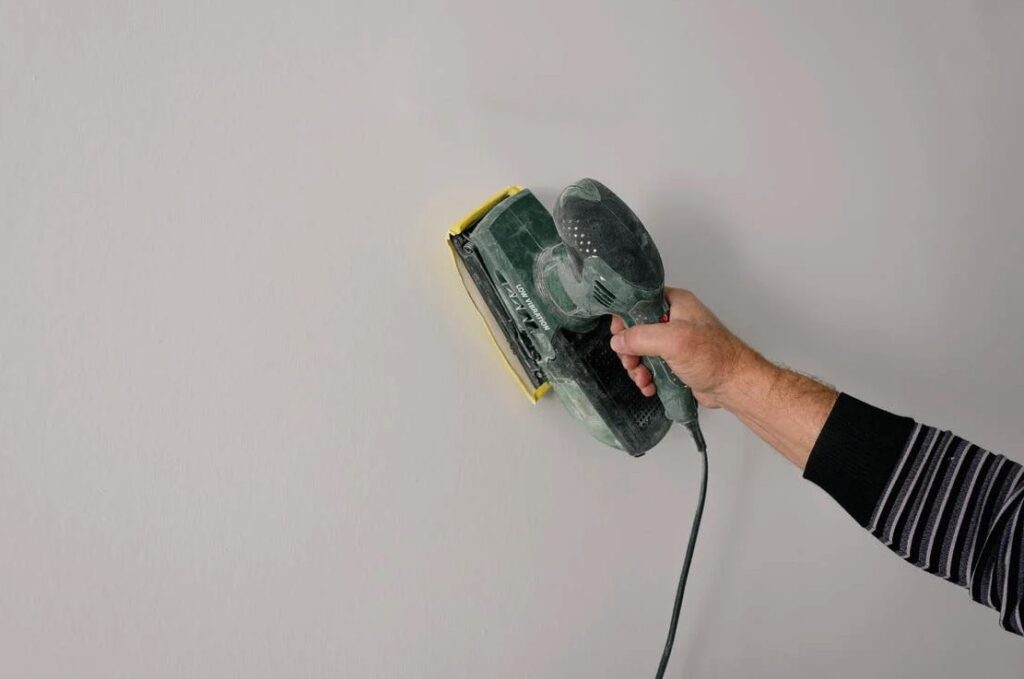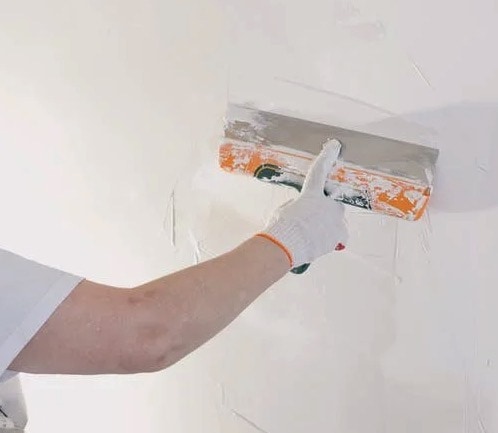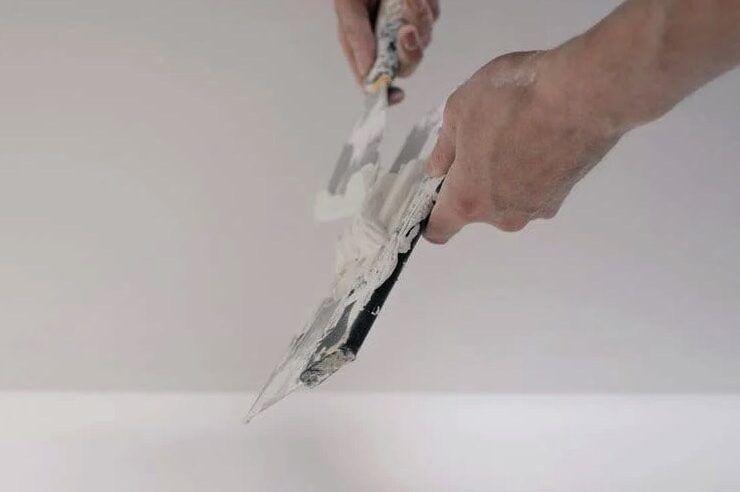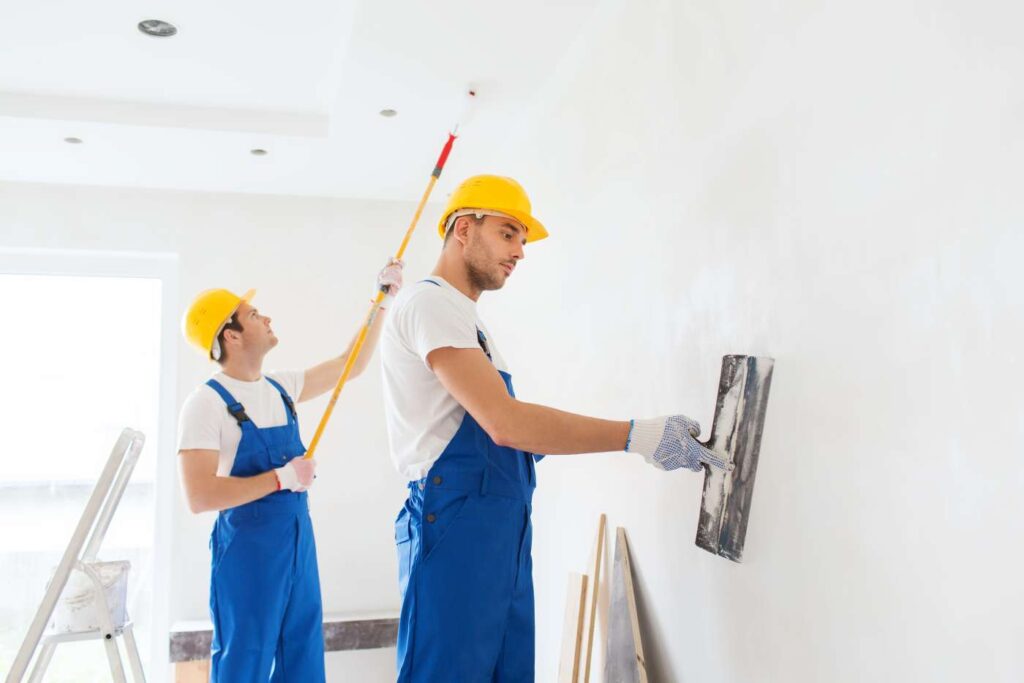Having expert plastering done is a must if you want your home to seem lovely. Plastering is an important aspect of building, and the purpose of the material is to make your home look more beautiful. Because it determines the building's strength, plastering the walls is an essential building component. The key to a healthy and long building life is extreme caution during plastering work in one's home.
So that you can build the house of your dreams with the utmost skill and attention to detail, plastering is an essential skill, and we'll teach you all you need to know about it in this post.
What Is Plaster?
A thorough comprehension of plastering is necessary before comprehending its role in construction. Plaster is a construction material that starts as a dry powder but can be easily transformed into a paste by adding water. For protection or aesthetics, this paste can coat walls and ceilings.
What Do You Mean By Plastering?
Plastering entails smoothing rough or uneven surfaces with polymeric materials like mortar or plaster to make them look uniform, regular, transparent, and long-lasting. A mixture of lime or gypsum, water, sand, and occasionally fibre can coat the walls and ceilings for improved waterproofing, adhesiveness, and termite resistance. Another reason to plaster is to seal any cracks or crevices that may exist in the masonry of a building. If you want to whitewash or colour-wash the structure, plastering is a good foundation to have.
What Are The Different Types Of Plaster?
Various types of plastering are applied based on the mortar. The most common kinds of plasters are summarised below:
Cement Plaster
This plaster's three main ingredients are Portland cement, Sand, and water. Both the inside and outside of stone buildings can be made smooth with cement plaster. When it comes to reducing moisture, it is thought of as the best plaster. You may make plaster in a single cement bag and devour it in just 30 minutes after you add water.
Lime Plaster
Water, hydrated lime, and sand make it up. Plaster made with lime is made by binding lime with other materials. Plaster made with lime typically uses a mortar of equal parts sand and lime. To make lime plaster more sturdy, mixing a tiny amount of cement into the mortar is recommended.
Submerging lime plaster in water usually prevents it from setting. Applying a thick layer or many coats can help the lime retain its softness for an extended period.
Mud Plaster
Mulch plaster is made by mixing equal parts of well-tempered clay or chopped straw, hemp, hay, loose dirt, brick earth, and cow dung. After being mixed with plenty of water, these ingredients are left to steep for around seven days. This is then mixed again until the plaster reaches the desired consistency; mud plaster, a combination of clay and sand, is also occasionally utilised.
Gypsum Plaster
Plaster of Paris and gypsum plaster are interchangeable terms. The mortar for the plaster is made by heating gypsum to 150°C, which creates calcium sulphate hemihydrate. When mixed with a tiny amount of water, plaster of Paris powder—also known as calcium sulphate hemihydrate powder—forms a slurry. Rehydrating the sludge produces gypsum crystals.
Plaster of Paris is spread over uneven ceilings and walls using trowels and metal floats. In general, the paste is evenly distributed across the surface. Walls are smoothed out when the paste has dried by polishing it with sandpaper.
Heat-Resistant Plaster
The plaster can withstand temperatures up to 50 degrees Celsius. Covering chimneys and stove exhaust pipes with this plaster is its primary function. Plaster mortars are composed of inert ingredients such as fly ash and a proportional blend of sand and cement.
When It Comes To Plastering, What Are The Benefits?
When laying the groundwork for a structure, plastering is a crucial step. There are several benefits to its ornamental and aesthetic value:
- Plastering gives existing drywall a strong and durable finish. A chemical reaction takes place when water seeps out of the cement mixture. This reaction strengthens the binding, which, in turn, makes the plastered walls more robust.
- Plastering creates an equal surface, which is helpful when applying paints. Walls that have been painted give houses a beautiful appearance.
- Plastering lends an air of refined elegance. Plastering provides a stable and consistent finish for the walls, allowing the builder to create a variety of designs and textures.
- Because plastering is a fast and easy process, any remodelling project may be finished on schedule.
- Even after being out in the elements for long periods of time, plastering leaves behind less dust than other building materials.
- Plastering leaves a pristine finish because it is less prone to surface breaking.
Is There Anything Bad About Plastering?
The following are some of the drawbacks of plaster walls as compared to drywall construction:
- Plaster walls are expensive to build because they require a lot of skilled labour.
- Keeping plaster walls in good condition is a challenging task. You must first drill pilot holes and set anchors to hang heavy objects like televisions or pictures. It could be more of a chore to keep textured plaster walls clean.
- The likelihood of surface cracking increases as plaster ages because it gets more delicate and stiff.
- Expertise is necessary for plaster repairs or replacements. Although it is a time-consuming and costly process, experts can repair massive cracks and drooping ceilings.
What Are The Most Common Instruments Utilised In Plastering?
With the help of a few essential instruments called plastering tools, we may achieve a well-plastered wall with a smooth finish. Below, we have covered the functions of various plastering tools.
Finishing Trowel
Every plasterer's toolbox should include a finishing trowel. It removes rough patches from plaster and leaves behind a silky smooth surface because of its wider, flatter blade.
Window Trowel
When plasterers cannot use other trowels near windows, they typically use their window trowel. The window trowel is ideal for use in areas surrounding windows because of its smaller blade face, which allows for more manoeuvrability when working with walls.
Mortar Stand
The plastering material can be held and easily accessed on a small, collapsible table called a mortar stand. Despite its seeming simplicity, this plastering tool has far-reaching consequences.
Hawk
Plasterers always have the hawk on hand as one of their vital equipment. This surface is designed to hold the plaster material as it moves. Hawk facilitates the easy and rapid application of plaster to ceilings and walls.
Snips
For any contemporary plastering job, this plastering tool is a must-have. This tool is useful for cutting two common kinds of beaded metal. For flawless plastering, every plasterer needs a sturdy pair of snips.
Plasters Float
When applied to the last coat of plaster, this tool ensures a flawless finish. To ensure that the surface is even, plasterers typically bring this instrument with them when they work.
Scarifier
For a stronger bond, while applying subsequent layers of plaster, the plasterer might use this big metal comb to comb lines right into the render. Using this tool makes plastering much easier.
FAQs About Plasterer
The timeline for plastering your home depends on factors such as the size of the project, the condition of the walls and ceilings, and the type of plaster materials used. It's best to consult with your contractor for an accurate estimate.
To protect your furniture and belongings, consider covering them with plastic sheets or relocating them to another area of the house until the plastering process is complete.
During the plastering process, the contractor will apply multiple layers of plaster to the walls and ceilings, allowing each layer to dry before applying the next one. There may be some noise and dust during this time.
The drying time for plaster varies depending on factors such as humidity, temperature, and the type of plaster used. Generally, plaster may take 24 to 48 hours to dry completely.
To maintain your plastered surfaces, avoid harsh cleaning agents, wipe away dust and dirt regularly, and promptly address any cracks or damages to prevent further deterioration.
Homeowners' Guide To The Benefits And Drawbacks Of Common Plastering Techniques
Traditional Plastering
The most well-known and long-standing method is traditional plastering. The process entails coating your walls and ceilings with cement, sand, and water. A professional plasterer will use tools like trowels and floats to level the surface. Plastering in the traditional style is a great option for contemporary and historic homes.
Pros:
- Longevity proven.
- Adaptable to different styles and versatile.
- Ceilings and walls can be covered with it.
Cons:
- For a perfect result, professional plasterers are needed.
- Dried at a slower rate than alternative methods.
Skim Coating
Skim coating, often called plaster skim, is a finishing plaster technique covering preexisting walls and ceilings with a thin layer. Rejuvenating worn surfaces, hiding flaws, and attaining a flawless finish are all made easier using this method. Plasterboard, drywall, or even old plaster can be coated with skim.
Pros:
- Perfect for updating and modernising preexisting flooring.
- Gets a consistent and polished look.
- Reduced drying time in comparison to conventional plastering methods.
Cons:
- Surfaces with extensive damage might be better candidates.
- Must be well-prepared to achieve the best results.
Venetian Plaster
The lavish and decorative plastering practice is known as Venetian plaster, and it all started in Venice. This technique uses a trowel to apply several thin coats of plaster, which are subsequently burnished to a marble-like sheen. Consider using Venetian plaster to build feature walls in your house for a sophisticated look that will turn heads.
Pros:
- Superior, upscale polish.
- Provides a diverse selection of textures and colours.
- It elevates the look of any room it is placed in.
Cons:
- Calls for the craftsmanship of a competent craftsperson.
- It may cost more than alternative plastering techniques.
Drywall Installation
Large sheets of gypsum board, also known as plasterboard or gypsum board, are fastened to the frames of walls or ceilings during drywall installation. Drywall is a cheap and efficient option when you need a flat surface immediately. It is frequently utilised in both new building and remodelling projects.
Pros:
- Installing quickly.
- Simple to paint or texturise.
- Perfect for big projects with a tight budget.
Cons:
- Susceptible to harm from rain and collisions.
- It is more adaptable than other methods when it comes to design.
Lime Plaster
A porous lime plaster has been used for centuries as an environmentally beneficial process. Historic and period properties are ideal for this. The natural ingredients of lime plaster—lime, sand, and water—enable the water to evaporate, eliminating the dampness problem.
Pros:
- Sustainable and kind to the environment.
- Suitable for the preservation of old buildings.
- Permits air to circulate, which keeps walls from becoming too damp.
Cons:
- Skill in applying lime plaster is necessary.
- The drying time is longer than that of some contemporary substitutes.
Why Is Plaster A New Trend?
A high-end wall finish is plaster. Plaster wall installation is more labour-intensive than drywall hanging or repair since it requires specialised expertise and abilities. In addition to these benefits, plaster walls bring texture and mood to your home.
Calcium carbonate (limestone) or calcium sulphate (gypsum) are the usual ingredients in plaster. It is mined and then heated to make it into a powder. Plaster can be made with various textures and colours by adding various additives to the powder, such as sand or marble. The powder is mixed with water and then trowelled onto a surface like a wall or board.
The long-lasting nature of plaster allows architects and designers to utilise it on both internal and external walls, creating a seamless and integrated aesthetic that brings the outdoors within.
Plaster wall finishes also have an artistic quality because they are hand-applied by artisans, which can result in variations in texture and the visible signs of brush strokes. When applied to a flat surface, Venetian plaster—a combination of polished plaster and marble dust—creates the impression of depth.
Conclusion
Putting up plaster is an important part of building because it makes homes look better and keeps them strong. It involves using plastic materials like mortar or plaster to smooth out rough or uneven surfaces so they look even, regular, clear, and durable. A mix of lime or gypsum, water, sand, and fibre can be used to make plaster that is better at sticking together, sealing, and keeping termites out. Bricks and stones that are cracked or worn down can also be sealed with it.
There are different kinds of plaster, like gypsum plaster, cement plaster, lime plaster, mud plaster, and heat-resistant plaster. If you add water, cement plaster can be made in just 30 minutes and is the best way to get rid of wetness. To make mud plaster, you mix well-tempered clay, hemp, hay, loose dirt, brick earth, and cow dung. To make lime plaster, you mix lime with other things. Gypsum plaster, which is also called "plaster of Paris," is made by burning gypsum to 150°C, which turns it into calcium sulphate hemihydrate powder.
Plastering has many benefits, such as giving old drywall a strong and long-lasting finish, levelling the surface so that paint can stick evenly, adding a touch of refined grace, being quick and easy to do, producing less dust than other building materials, and leaving a spotless finish. But plastering has some problems, like being expensive, hard to keep in good shape, more likely to crack, and needing to be fixed or replaced by a professional.
For a smooth, well-painted wall, plastering is a process that needs a number of different tools. There are finishing trowels, window trowels, mortar stands, hawks, snips, plaster floats, and scarifiers that are often used for plastering. Plastering has been around for a long time and is the most well-known method. It involves covering walls and ceilings with a mixture of cement, sand, and water. It looks good in both new and old houses and has a lot of benefits.
Skim coating, which is also called plaster skim, is a way to finish plaster that can be used on walls and ceilings that are already there to make them look brand new. Venetian plaster comes from Venice and is made by spreading thin layers of plaster with a shovel. These layers are then burned to make them shine like marble. This method gives the polish a better finish, more textures, and a more elegant look.
Drywall installation is a cheap and quick way to cover flat surfaces, but it needs to be done by a professional and takes longer to dry than other options. The process of lime plaster is good for historic and period homes because it lasts a long time and is good for the earth.
Putting up plaster walls is becoming popular because they look great and last a long time. To make it, limestone or gypsum, which are both made of calcium carbonate, are dug and heated until they turn into a powder. Because plaster lasts a long time, builders and designers can use it on both inside and outside walls to create a smooth look that brings the outside inside. Plaster wall finishes are also artistic because they are applied by hand by artists, who leave noticeable brush strokes and changes in texture.
Content Summary
- Expert plastering is crucial for enhancing the aesthetic appeal and structural integrity of a home.
- Plastering serves both protective and decorative purposes by coating walls and ceilings.
- Understanding plaster and its role in construction is essential before undertaking plastering work.
- Plaster starts as a dry powder and transforms into a paste with the addition of water.
- Plastering smooths rough surfaces, making them uniform and durable, and prepares them for finishing treatments.
- Different types of plaster are chosen based on the specific needs of the construction project.
- Cement plaster, made from Portland cement, sand, and water, is ideal for moisture reduction.
- Lime plaster combines water, hydrated lime, and sand, offering flexibility and durability.
- Mud plaster, a mix of clay, straw, and water, is an eco-friendly option.
- Gypsum plaster, or Plaster of Paris, provides a smooth finish and is used for uneven ceilings and walls.
- Heat-resistant plaster is used for areas exposed to high temperatures, like chimneys and stove exhaust pipes.
- Plastering enhances the durability of walls through a chemical reaction that strengthens the binding.
- A smooth plaster finish provides an ideal base for painting, contributing to a home's beauty.
- Plastering adds a touch of elegance and allows for creative designs and textures.
- The plastering process is efficient, facilitating timely completion of remodeling projects.
- Plastering is less dusty than other construction materials, leaving a clean finish.
- Despite its benefits, plaster walls are more expensive and require skilled labor for installation.
- Maintenance of plaster walls can be challenging, especially for hanging heavy objects.
- Over time, plaster can become brittle and prone to cracking.
- Repairing plaster requires expertise and can be costly and time-consuming.
- Essential tools for plastering include the finishing trowel, window trowel, mortar stand, hawk, snips, plaster's float, and scarifier.
- Traditional plastering is a time-tested method suitable for both modern and historic homes.
- Skim coating is ideal for updating existing surfaces and achieving a smooth finish.
- Venetian plaster offers a luxurious, marble-like sheen and enhances room aesthetics.
- Drywall installation is a cost-effective and quick option for achieving flat surfaces.
- Lime plaster is environmentally friendly and ideal for preserving historic properties.
- Plaster walls, requiring specialized skills, add texture and depth to a home's interior.
- The versatility of plaster allows for various textures and colors by adding different additives.
- Plaster's durability makes it suitable for both interior and exterior applications, contributing to a seamless aesthetic.
- The artistic quality of plaster wall finishes adds uniqueness and character to spaces.
- Prominent architects and designers frequently use plaster in their projects for its aesthetic appeal.
- Homeowners are increasingly showcasing their plastered walls on social media platforms.
- The choice of plaster type depends on the specific requirements of the building and the desired finish.
- Proper plastering can seal cracks and crevices in masonry, enhancing the building's integrity.
- Plastering is foundational for whitewash or color-wash applications.
- The benefits of plastering extend beyond aesthetics to include increased wall strength and waterproofing.
- Adhesiveness and termite resistance are additional advantages of plastering.
- The right plaster can significantly impact the longevity and health of a building.
- Plastering requires careful consideration of materials and techniques to achieve the best results.
- Knowing the different types of plaster and their applications can guide homeowners and builders in their selection.
- Plastering not only beautifies but also protects walls and ceilings, contributing to the overall durability of the structure.
- The traditional skill of plastering remains relevant in modern construction for its numerous benefits.
- The choice between plastering methods and materials can affect the project's cost, duration, and outcome.
- Skilled plasterers play a crucial role in achieving high-quality plaster finishes.
- Innovations in plastering techniques and materials continue to offer new possibilities for building and design.
- Environmental considerations are increasingly influencing the choice of plastering materials, with options like lime and mud plaster gaining popularity.
- Plastering techniques can vary widely, from traditional methods to modern approaches like skim coating and Venetian plaster.
- The resurgence of plaster as a preferred wall finish reflects a growing appreciation for its aesthetic and functional qualities.
- The complexity of plastering work underscores the importance of expertise in achieving desired outcomes.
- As plastering trends evolve, the fundamental principles of quality, durability, and aesthetics remain central to the craft.
